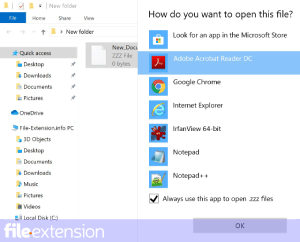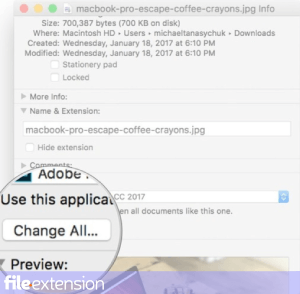
POP File Extension
DBase Popup Menu Format
-
DeveloperdataBased Intelligence, Inc.
-
Category
-
Popularity3 (6 votes)
What is POP file?
POP filename suffix is mostly used for DBase Popup Menu Format files. dataBased Intelligence, Inc. defined the DBase Popup Menu Format format standard. POP file format is compatible with software that can be installed on system platform. POP file format, along with 1305 other file formats, belongs to the Settings Files category. The software recommended for managing POP files is dBASE. On the official website of dataBased Intelligence, Inc. developer not only will you find detailed information about thedBASE software, but also about POP and other supported file formats.
Programs which support POP file extension
Files with POP suffix can be copied to any mobile device or system platform, but it may not be possible to open them properly on target system.
How to open file with POP extension?
Problems with accessing POP may be due to various reasons. On the bright side, the most encountered issues pertaining to DBase Popup Menu Format files aren’t complex. In most cases they can be addressed swiftly and effectively without assistance from a specialist. The following is a list of guidelines that will help you identify and solve file-related problems.
Step 1. Get the dBASE
 The most common reason for such problems is the lack of proper applications that supports POP files installed on the system. To address this issue, go to the dBASE developer website, download the tool, and install it. It is that easy On the top of the page a list that contains all programs grouped based on operating systems supported can be found. If you want to download dBASE installer in the most secured manner, we suggest you visit dataBased Intelligence, Inc. website and download from their official repositories.
The most common reason for such problems is the lack of proper applications that supports POP files installed on the system. To address this issue, go to the dBASE developer website, download the tool, and install it. It is that easy On the top of the page a list that contains all programs grouped based on operating systems supported can be found. If you want to download dBASE installer in the most secured manner, we suggest you visit dataBased Intelligence, Inc. website and download from their official repositories.
Step 2. Check the version of dBASE and update if needed
 If you already have dBASE installed on your systems and POP files are still not opened properly, check if you have the latest version of the software. It may also happen that software creators by updating their applications add compatibility with other, newer file formats. If you have an older version of dBASE installed, it may not support POP format. All of the file formats that were handled just fine by the previous versions of given program should be also possible to open using dBASE.
If you already have dBASE installed on your systems and POP files are still not opened properly, check if you have the latest version of the software. It may also happen that software creators by updating their applications add compatibility with other, newer file formats. If you have an older version of dBASE installed, it may not support POP format. All of the file formats that were handled just fine by the previous versions of given program should be also possible to open using dBASE.
Step 3. Set the default application to open POP files to dBASE
After installing dBASE (the most recent version) make sure that it is set as the default application to open POP files. The method is quite simple and varies little across operating systems.

Selecting the first-choice application in Windows
- Right-click the POP file and choose option
- Next, select the option and then using open the list of available applications
- Finally select , point to the folder where dBASE is installed, check the Always use this app to open POP files box and conform your selection by clicking button

Selecting the first-choice application in Mac OS
- From the drop-down menu, accessed by clicking the file with POP extension, select
- Open the section by clicking its name
- Select the appropriate software and save your settings by clicking
- Finally, a This change will be applied to all files with POP extension message should pop-up. Click button in order to confirm your choice.
Step 4. Check the POP for errors
Should the problem still occur after following steps 1-3, check if the POP file is valid. Being unable to access the file can be related to various issues.

1. Check the POP file for viruses or malware
If the POP is indeed infected, it is possible that the malware is blocking it from opening. Immediately scan the file using an antivirus tool or scan the whole system to ensure the whole system is safe. If the scanner detected that the POP file is unsafe, proceed as instructed by the antivirus program to neutralize the threat.
2. Verify that the POP file’s structure is intact
If you obtained the problematic POP file from a third party, ask them to supply you with another copy. The file might have been copied erroneously and the data lost integrity, which precludes from accessing the file. If the POP file has been downloaded from the internet only partially, try to redownload it.
3. Check if the user that you are logged as has administrative privileges.
Sometimes in order to access files user need to have administrative privileges. Switch to an account that has required privileges and try opening the DBase Popup Menu Format file again.
4. Make sure that the system has sufficient resources to run dBASE
If the systems has insufficient resources to open POP files, try closing all currently running applications and try again.
5. Verify that your operating system and drivers are up to date
Latest versions of programs and drivers may help you solve problems with DBase Popup Menu Format files and ensure security of your device and operating system. It is possible that one of the available system or driver updates may solve the problems with POP files affecting older versions of given software.
Conversion of a POP file
File Conversions from POP extension to a different format
File conversions from other format to POP file
Do you want to help?
If you have additional information about the POP file, we will be grateful if you share it with our users. To do this, use the form here and send us your information on POP file.

 Windows
Windows 
